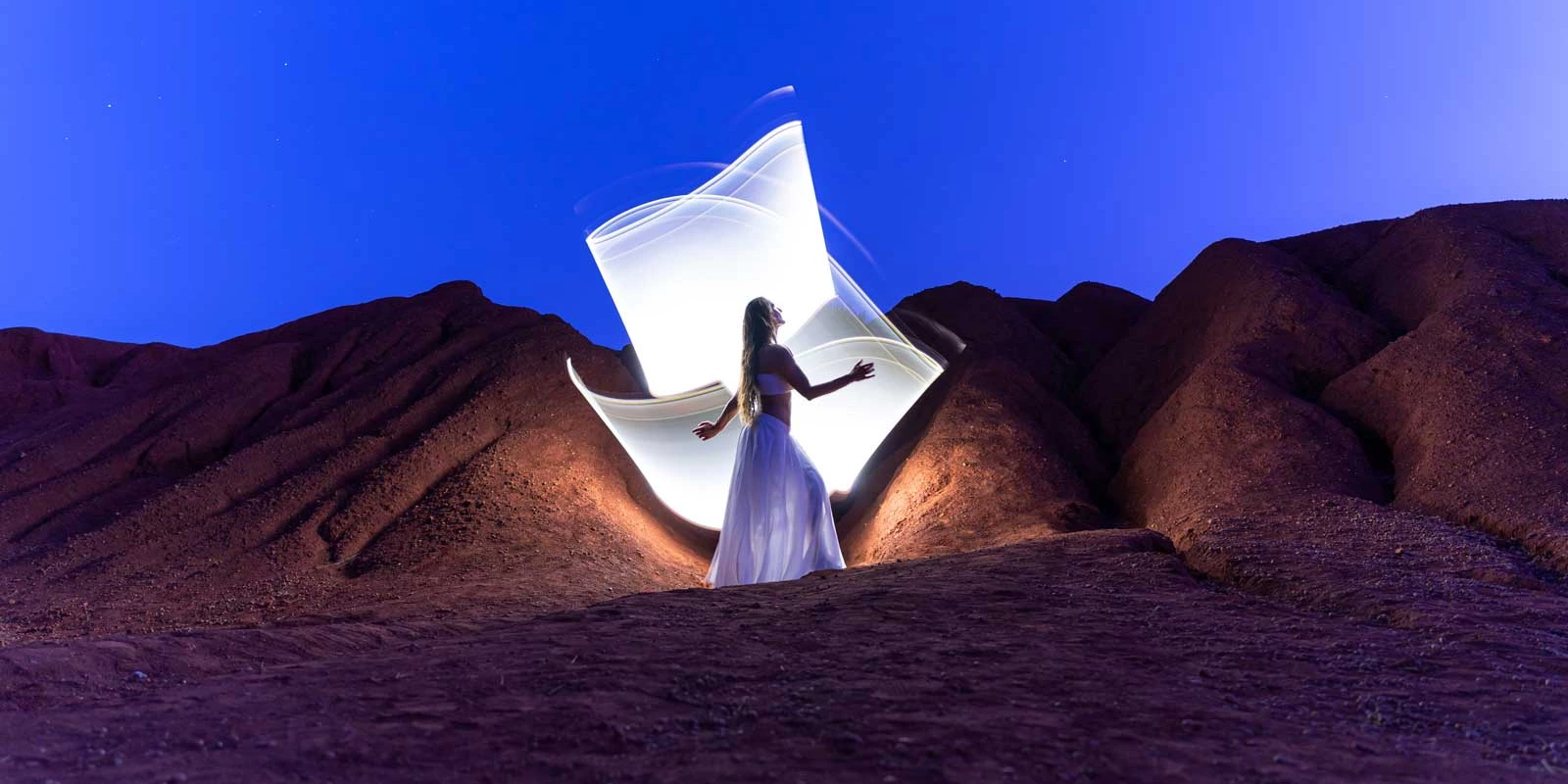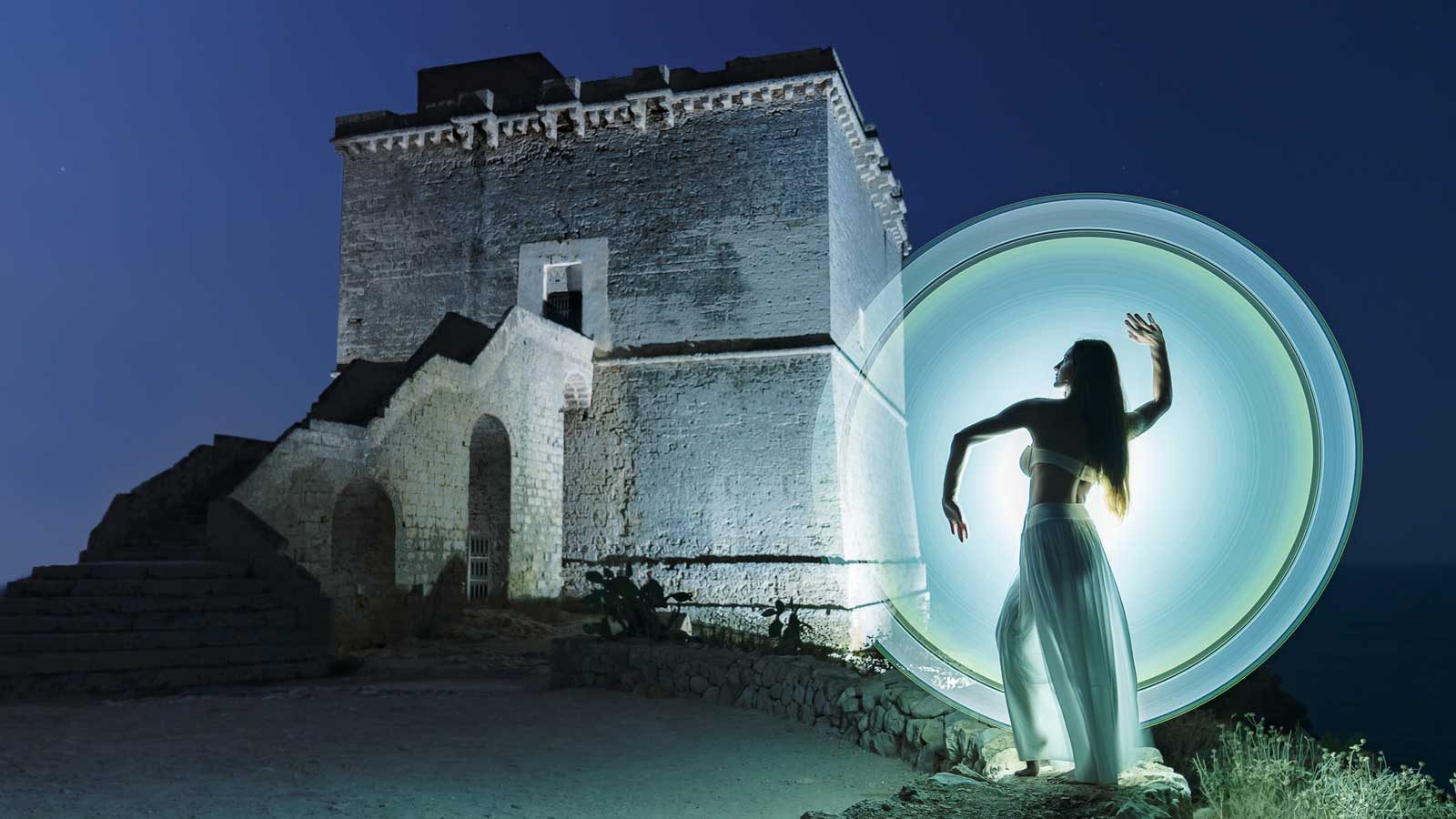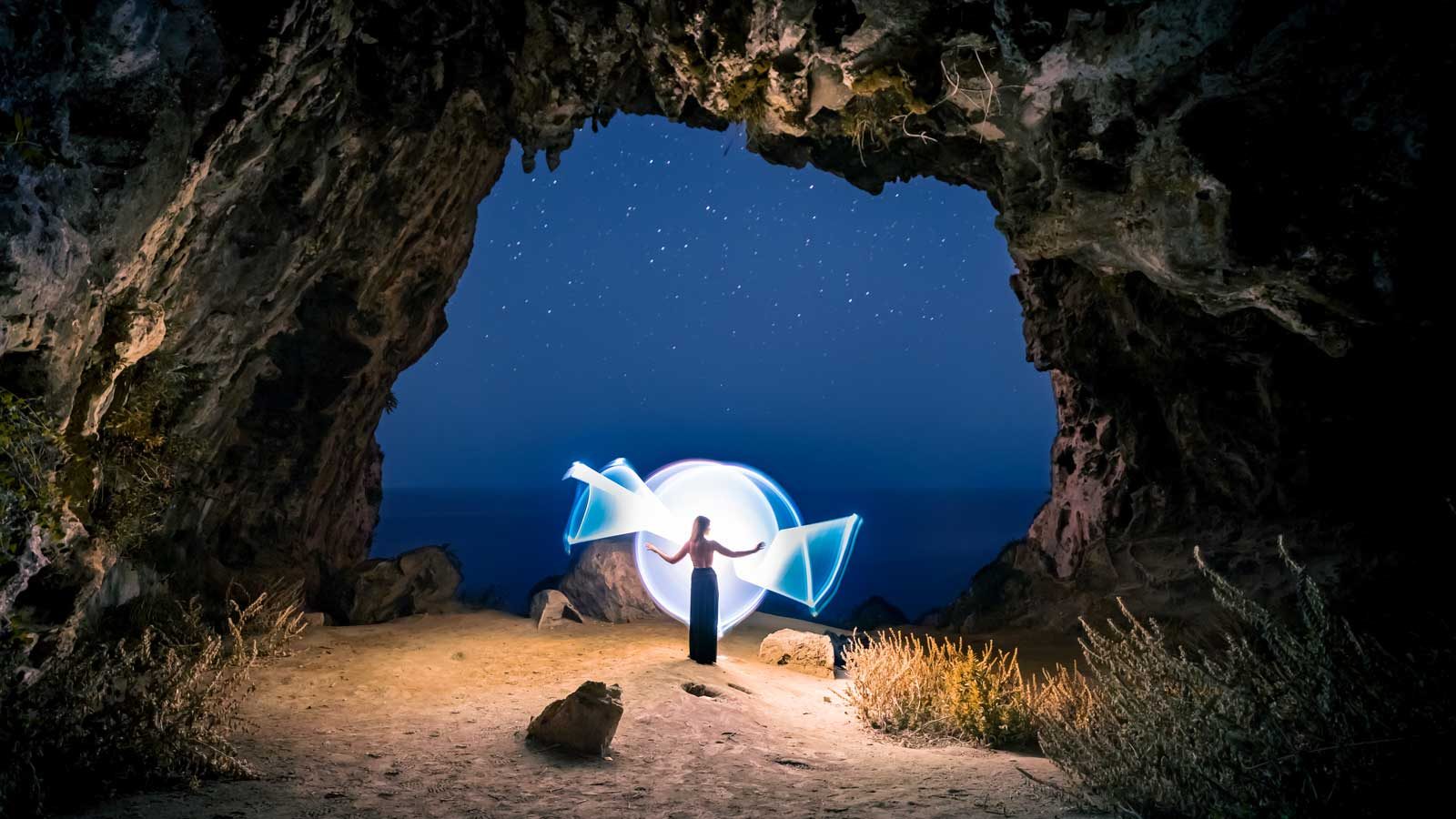
Using historical monuments in my light-painting photos: what do I think about
I remember when I started light-painting using light tubes and a model. The first year, with the first rudimentary tools, I immediately thought of taking advantage of the beauties that my city Lecce could offer.
Lecce has a historical architecture based on the Baroque, typical with its light stone, ready to be the background with its churches, palaces, the streets of the historic center.
The resulting photos were beautiful, beginner's but beautiful. But was it the right way to enhance my light-painting? My photos were beautiful for the dancer (hello Betti!) Wrapped in beams of light ... or because of the monuments in the background?
In 2021 I was convinced to pay homage to the Coastal Towers that have guarded our coasts for centuries. Ilenia wanted to dedicate a light-painting session to Torre Lapillo, Torre Squillace, Torre Uluzzo and Torre dell'Alto. It is not easy to insert a tower 15-18 meters high in the typical landscape photo of my light-painting but I succeeded and the result was appreciable. But in my opinion, the Tower belittles the work done with Ilenia.

Does it make sense to use a historic building to enrich your photo? Is it okay to use other people's art in your photos? I have my own opinion which I will argue later but first I would like to analyze the matter.
First, I tried to list the advantages and disadvantages. A kind of SWOT analysis but simpler and lighter.
Using other people's works in photos: pros and cons
Cons: Using a historic building affects the composition of the photos. In order for the building to be recognized and therefore to make our photo more interesting (wink), it must be well recognizable. And being large, his presence will greatly influence the photographic composition. Where should the subject be placed? In the center? Sideways? On one of the third parties why are we accurate? And how far do we have to go to balance a person with an object 10 times higher?
Cons: Other people's artwork overshadows the subject. Dimensions aside, which are the most obvious aspect of the matter, a historic building / monument / artwork featured in the photo detracts from the subject. It makes it less important. It is called the subject for a reason.
Pros: the work of others makes the context very recognizable. One of the greatest advantages is that the viewer immediately recognizes the place, not bringing it into the "difficulty" of having to work the brain to contextualize the shot. The photo is therefore very salable.
Cons: the work of others, being very recognizable, can make the photo trivial.
Pros: If we use someone else's work in our photo, our photo will look gorgeous. But will it be because we use the work of another artist... or because of our skills?
If someone used your work to create his own, would you be happy?

In my opinion the border is thin. Usually the border is given by the profit and the advantage that the artist derives from the use of a work created by another artist.
For example: if you created a mural, a graffiti created entirely by you and then someone used it as the background of their photos to advertise a streetwear brand. Would you be happy with it?
Second example, the facade of a modern building designed by a super architect. A 100k influencer makes deals with sponsors and uses the facade to set their content. Would you, the owners of the building, be happy with it?
Small variant: if someone used your work to make money, would you be happy?
I don't think so.
So far I talked about the most common example: works made by human ingenuity. What about our Mother Earth?
Use natural monuments in your photos
Nature provides us with numerous natural monuments: mountains, hills, rock formations, sand dunes, trees, vegetation, rivers, lakes, coastal areas by the sea or the ocean.
Using them, even if some are more used than others for various reasons, does not diminish your photo on the contrary it enriches it. These are elements available to everyone, not created by human ingenuity. Why should copyright laws matter?
It is also part of the photographer to search for the ideal location, a corner, an ideal spot to portray creatively. Even with light-painting.
And in this case we can talk about storytelling, if you want to tell / depict a place in a certain way. But let's go easy on storytelling. I'll talk about it later.
But even landscape photography can be tricky when it comes to copyright.
The copyright laws of places: Freedom of Panorama
When I first heard about Panorama copyright, I was amazed: is it really not possible to photograph a city, because some of its buildings fall under the rules of copyright?
As you can imagine, the question is governed by the way in which images depicting places are used: if I were to shoot scenes of an advertising video in Rome, on a terrace where the Imperial Forums, the Altare della Patria are clearly recognizable. and the rest of the city... there may be problems with the use of images. No problem if I took a nice overview with my camera to post it on Facebook and receive the likes of hundreds of boomers.

But let's see in detail what it is, citing Wikipedia which summarizes a bit of everything.
Is it possible to photograph a place for commercial purposes?
The freedom of Panorama varies depending on the country where the law applies. In general, if there is a profit activity (or more generally, a gain is obtained) on the images, an authorization is required from the owner of the works (buildings, monuments, etc.).
Freedom of panorama is normally subject to special regulations in local copyright laws, enacted with the aim of ensuring reasonable freedom to photograph in public places. These rules generally allow you to take and post photographs of buildings that are visible to the public and non-private scenes from public places.
Since October 7, 2016, article L122-5 of the French Code of Intellectual Property provides for a limited freedom of panorama for works of architecture and sculpture. The code authorizes "reproductions and representations of works of architecture and sculpture, placed permanently in public places (voie publique), and created by natural persons, with the exception of any usage of a commercial character".
In Italy freedom of panorama does not exist. Despite many official protests and a national initiative led by the lawyer Guido Scorza and the journalist Luca Spinelli (who highlighted the issue), the publishing of photographic reproductions of public places is still prohibited, in accordance with the old Italian copyright laws.
I remember when the news spread that, since the construction of the London Eye, panoramic images of the city would be deemed illegal without authorization (!).
Similarly, photos or videos depicting the Eiffel Tower during the day do not need authorization because they are considered to be in the "public domain". Unlike if portrayed at night, because its lighting is a work of ingenuity and therefore protected by copyright. Here the guidelines available on the official website.
Views of the Eiffel Tower taken by private individuals for private use do not require prior agreement. However, professionals must contact our teams, who will inform them of the conditions of use governing images.
Is it possible to photograph a historic building / monument for commercial purposes?
It is interesting how the most important services related to photography provide detailed information on places of interest and related laws: here those provided by Getty Images (an example? The Berlin Central Station) and from Shutterstock.
If I were to decide to do light-painting in front of the very famous Atomium in Belgium, things would be much more complicated:
Any use for commercial and advertisement purposes drawings, paintings and other graphic adaptations or arrangements of the original work, in cases where the work reproduced or communicated to the public no longer appears as it can be seen in the public domain. (source: atomium.be)
Reference to Italian laws
Since I am in Italy and my business is 99% of Italian soil, I must admit that the laws are very clear. If you use a historical monument, a building or more generally a work in your images (photos or videos) you must first define for what purpose.
Commercial use (therefore involving profit, or more widely gain if visibility is obtained) must be authorized by the owner of the work. Generally a historical monument is "owned" by the Superindentence for Cultural Heritage.
the disclosure by any means of images of cultural assets, legitimately acquired, so that they cannot be reproduced further for profit.
The reference law is the legislative decree 22 January 2004, n. 42, (Code of cultural heritage and landscape or Urban Code). It is a legislative decree that regulates the protection of the cultural and landscape heritage of Italy.
Does using historical monuments and buildings in your photos include Storytelling?
The term Storytelling is overused, in my opinion, by many photographers and filmmakers. Often the locations are used in their creations only to make them more interesting, because otherwise they would remain banal creations.
Let's take the (trivial) example of a director who wants to make the video clip of a Milanese trapper. Will the video footage be more captivating if made with the Milan Cathedral in the background... or in a normal street with cars parked on the sides? Does storytelling have anything to do with it?
Conclusion
Would your photo, without the monument in the background, remain interesting?